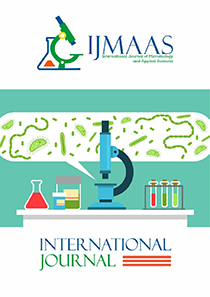Microbial Evaluation of Palm Oil Mill Effluent Impacted Environment in Rivers State, Nigeria
Vol. 3, Issue 3, 2024
KEYWORDS
Palm oil mill effluent, microbial evaluation, environmental impact, Shigella, Aspergillus, potential pathogens
Abstract
Palm oil mill effluent (POME) is a high-strength organic waste produced during the processing of palm oil and is discharged untreated into the surrounding environment. This study determined the microbiological and physicochemical parameters of POME-impacted environments in Rivers State, Nigeria as to evaluate the impact of the effluents on the microbial diversity and quality of the surrounding environment. Standard techniques were employed for the collection of soil, water and air samples from Elele and Erema locations and to enumerate, isolate and identify the microbial populations and for the determination of physicochemical parameters. Results of total heterotrophic bacterial (THB) count for dry season ranged from 0.48±0.4 to 2.4±0.6×107 CFU/g, while the fungal counts ranged from 0.40±0.3 to 4.6±1.6×104 SFU/g. The THB of POME impacted soil in Elele location was significantly (P<0.05) higher than only the Elele control, while the fungal count of the POME impacted soil in Erema was significantly (P<0.05) higher than all other samples including the controls. The THB of samples in raining season ranged from 5.5±1.1 to 21.9±0.9×106 CFU/g, while the fungal counts ranged from 0.35±0.2 to 1.7±1.1×104 SFU/g. The THB of the POME impacted soil in Elele location was significantly (P<0.05) higher than the other samples including the control. Bacillus sp, Enterobacter sp, Providencia sp, Shigella sp, and Micrococcus sp., were bacteria isolated from the POME-impacted environments. Rhizopus sp, Aspergillus sp., Aspergillus flavus, Penicillium sp., and Fusarium sp. were associated with POME-impacted environments. The pH of the pond during dry and raining seasons was 4.74 and 7.55 respectively. Soil-parameter ranges were: pH 4.26-5.74, temperature 24.6-32.5°C, EC: 37.06-69.24µS/cm, nitrate: 51.03-74.18mg/kg, phosphate: 13.48-19.67mg/kg and potassium: 103.17-183.49mg/kg. The presence of isolated microorganisms could imply their ability to thrive in nutrient-rich environment associated with POME. Additionally, Staphylococcus, Shigella and Enterococcus sp could be potential pathogens among these isolates which could raise public health concerns. Treatment of POME before discharge and remediation of POME-impacted soil is recommended.
Current: Vol. 4, Issue 1, 2025

Call for papers
The International Journal of Microbiology and Applied Sciences warmly welcome your valuable articles for publication.
